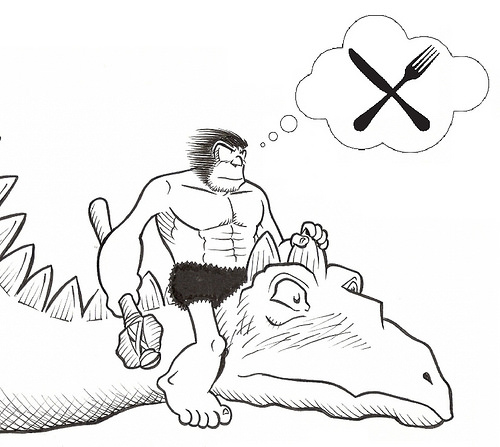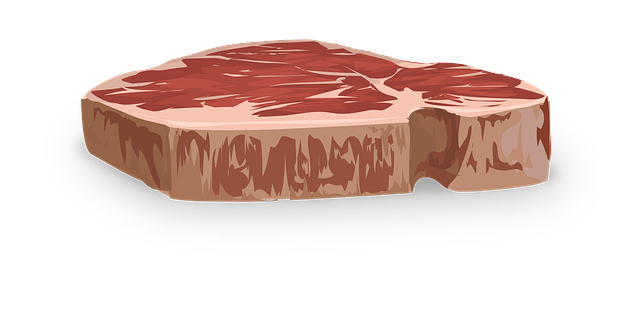What is the Paleo Diet?
If you are reading this , then you have probably heard that eating a Paleo Diet means to eat “like a caveman (or a cave woman).” This isn’t too far from the truth. Although research is not conclusive, there can be no debate that the diet of our ancestors differs significantly than the modern American diet. Paleo, short for “Paleolithic,” refers to the way our caveman ancestors ate hundreds of thousands of years ago. It is the way you are genetically programmed to eat. Free from modern dietary staples like processed foods, grains, dairy and refined carbohydrates, the BeginnerPaleo Diet will free you from a lifetime of weight gain and restore your body’s natural, brilliant health.
 Photo by Mike Licht, NotionsCapital.com
Photo by Mike Licht, NotionsCapital.com 
There can be no mistake about it: losing weight and keeping it off is hard. The medical and weight loss establishments have done a poor job of informing the general public about how to lose fat and how to keep it off. We have been instructed to exercise to exhaustion while dropping calories to a bare minimum. And the result has been a fatter, more tired population. We point the finger at ourselves. Why didn’t I have enough willpower to stick with the “diet”? We point the finger at society for encouraging us to eat, or the food industry for making foods that are processed and high in sugar. Why are they making me so fat? But what if it were all much simpler than that? We are focusing on the wrong methods to lose weight.
The goal of the BeginnerPaleo Diet is to cut through the confusion surrounding weight loss and “eating like a caveman” and give you the tools you will need to eat like our ancestors did. By doing this, you will effortlessly lose weight and guard yourself against modern diseases like cancer, diabetes and heart disease. Unlike other types of diets that require you to count calories or weigh and measure your food, the Paleo Diet is simple – eat the right types of food until you are full, workout a couple times a week and effortless weight loss and extreme health will result.
The Evolution of the Paleo Diet
Ten Thousand years ago, fast food restaurants, all you can eat buffets and pre-packaged foods in plastic wrappers did not exist. Our ancestors roamed the open plains, hunting and gathering whatever food they could find. When food was scarce, they didn’t eat, instead drawing on the fat stored in their bodies. When food was plentiful, they eat until their heart’s content. Modern agriculture and the invention of farming did not exist until about 10,000 years ago. As noted in the awesome documentary “Fat Head,” if all of human history and evolution could be shrunk down into one year, then we as modern humans have only been farming and consuming grains since yesterday!
The problem, from your body’s point of view, is that we are genetically and biologically evolved to eat the way of our Paleolithic ancestors did 2.5 million years ago. Nowadays, food is readily available at all times. There is no longer a need to hunt or gather food; you can drive thru and eat a meal laden with refined carbohydrates, processed fats and sugar. This puts you at an inherent disadvantage to our Paleo ancestors. “Dairy products, cereals, refined sugars, refined vegetable oils, and alcohol make up 72.1% of the total daily energy consumed by all people in the United States, these types of foods would have contributed little or none of the energy in the typical Paleolithic human’s diet.” In other words, modern society tells you to eat one thing while your body is still designed to eat the way of the caveman. It’s like putting water in a car’s gas tank; you are filling it up but there is no way it can run.

What did a caveman eat? Research tells us that about two-thirds of the diet came from animal sources (think meat and fat) with the remaining one-third coming from mainly plant sources (think vegetables and fruit). A recent compilation of “ethnographic data from 181 worldwide societies of hunter-gatherers showing that the mean plant to animal subsistence ratio in terms of energy was 35% plant and 65% animal.” Grains, legumes (think beans and peanuts), refined sugar, processed oils and other modern foods were not consumed. The pictures in your history textbooks in high school told the story. The figures in those books featured lean, muscular men and women. Anthropologic findings of Paleolithic remains support this depiction. Our ancestors were leaner, more muscular and could outrun, out-jump and outperform modern day people. In short, they were the pinnacle of human form.